11-Apr-2023
.
Admin
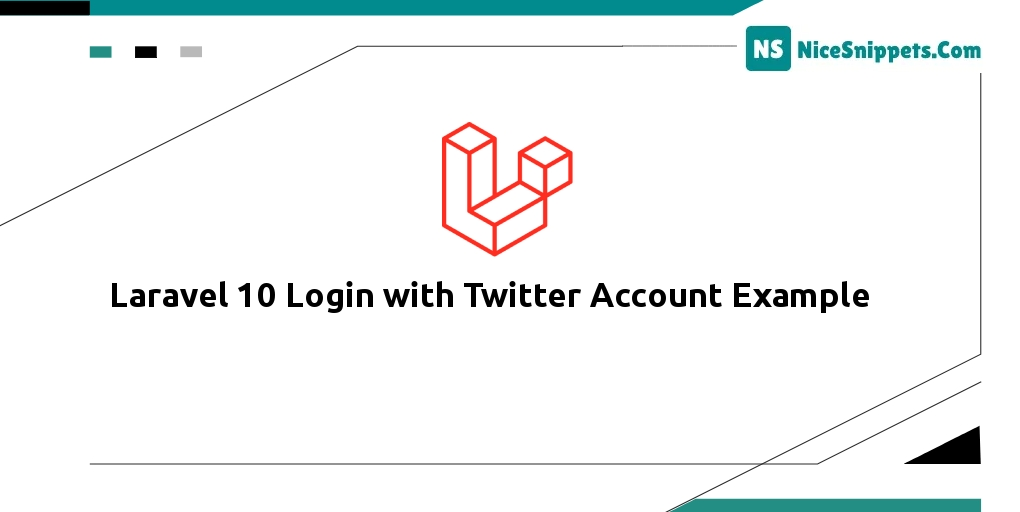
Hi friends,
Today, I explain laravel 10 logins with Twitter account examples. One of our readers asked to write an article on login with Twitter in Laravel 10. Today we implement Laravel 10 Login with Twitter Socialite Tutorial with an Example step-by-step. Here we use login and register blade file log-in with Twitter functionality in laravel 10 application. We will use the Laravel 10 Socialite composer package to use the Twitter API.
In laravel you can use this tutorial for laravel socialite for Twitter login in the Laravel app. We add Twitter icons in login and register pages where you log in using Twitter without registering the website. Let's start with the best unique way to laravel login with Twitter Socialite.
Step 1: Download Laravel
Let us begin the tutorial by installing a new laravel application. if you have already created the project, then skip the following step.
composer create-project laravel/laravel example-app
Step 2: Install JetStream
Now, in this step, we need to use the composer command to install jetstream, so let's run the bellow command and install the bellow library.
composer require laravel/jetstream
now, we need to create authentication using the below command. you can create basic login, register, and email verification. if you want to create team management then you have to pass additional parameters. you can see bellow commands:
php artisan jetstream:install livewire
Now, let's node js package:
npm install
let's run the package:
npm run dev
now, we need to run the migration command to create a database table:
php artisan migrate
Step 3: Install Socialite
In the first step, we will install Socialite Package that provides API to connect with the Twitter account. So, first, open your terminal and run bellow command:
composer require laravel/socialite
Step 4: Create Twitter App
First, we need to create Twitter App and get an ID and Secret. So, let's follow bellow steps as well:
Go to Twitter Developer App to click here: https://developer.twitter.com/en/portal/projects-and-apps
You can see bellow screenshots:
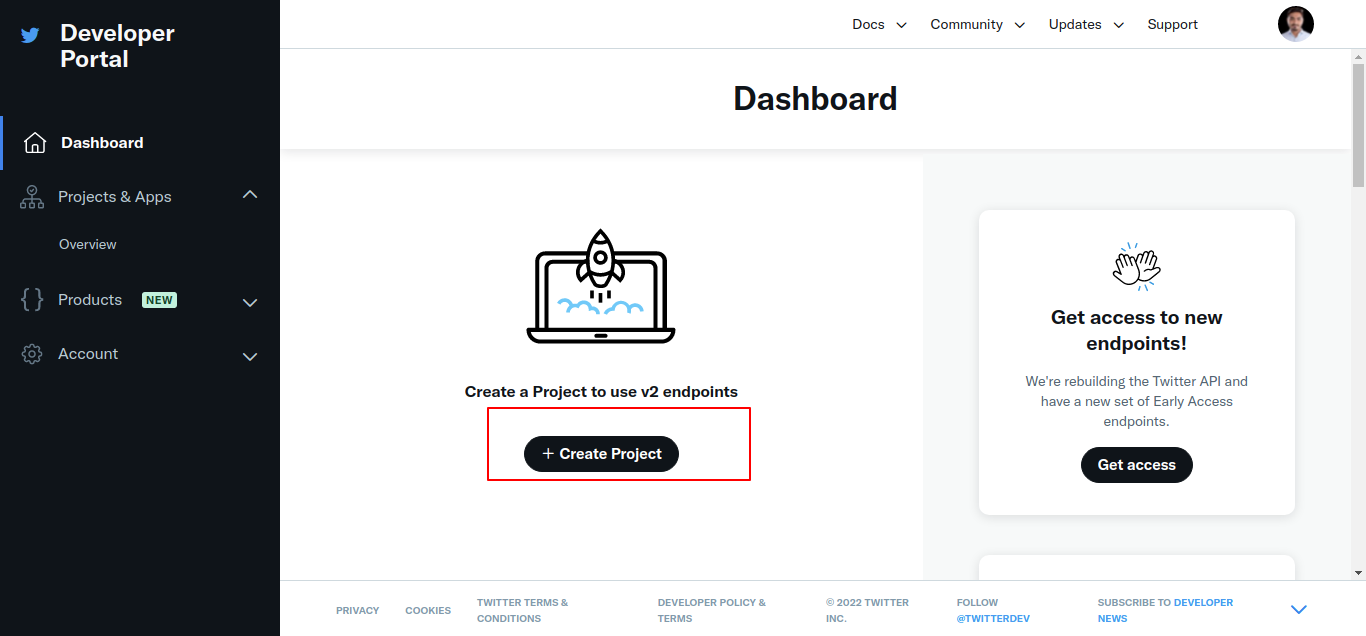
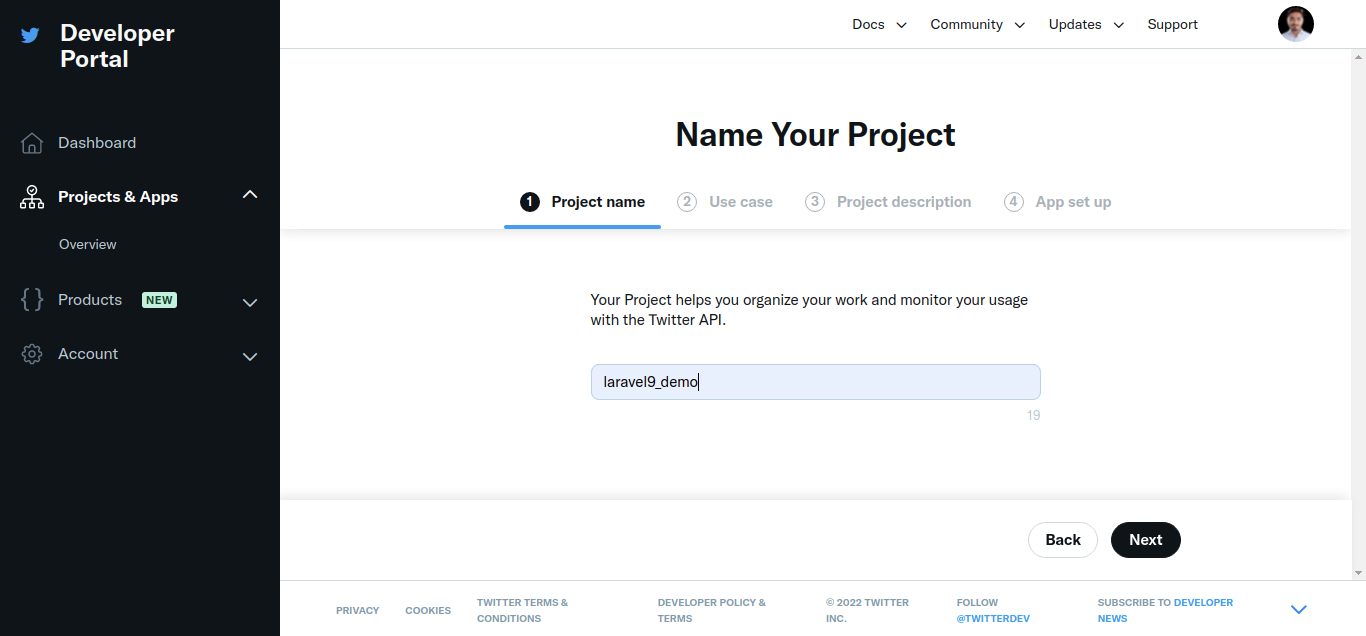
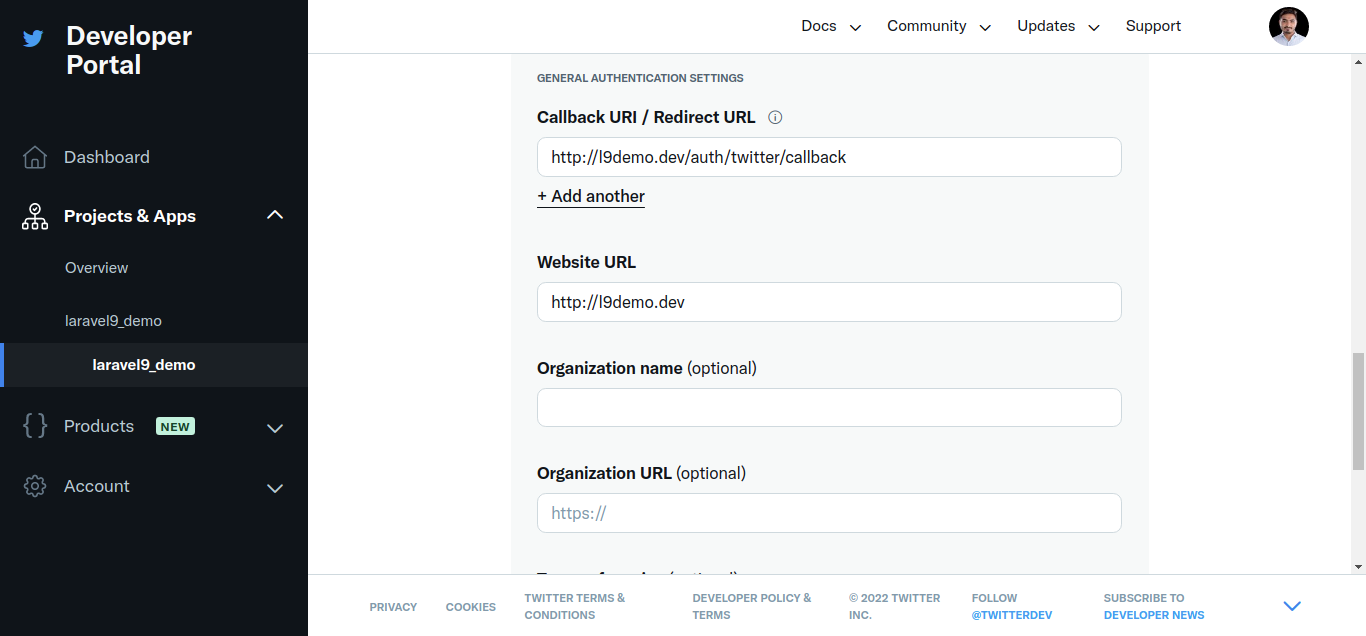
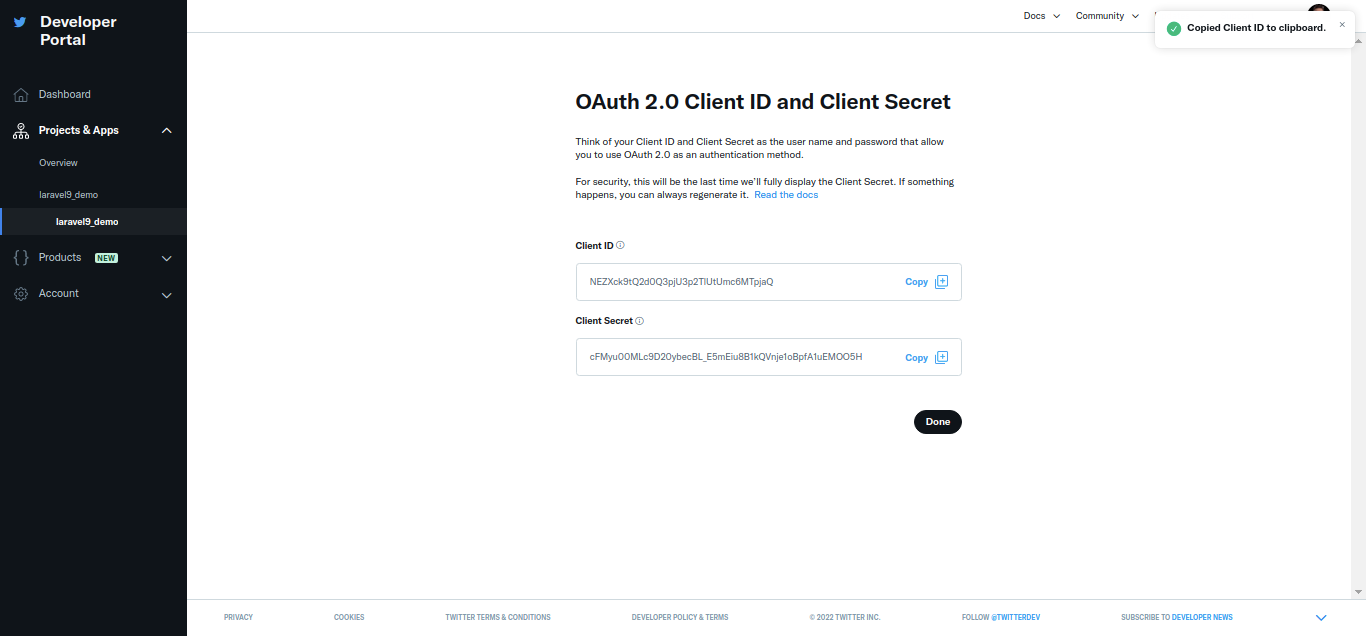
Now you have to set the app id, secret, and call back URL in the config file so open config/services.php and set the id and secret this way:
config/services.php
return [
....
'twitter' => [
'client_id' => env('TWITTER_CLIENT_ID'),
'client_secret' => env('TWITTER_CLIENT_SECRET'),
'redirect' => 'http://localhost:8000/auth/twitter/callback',
],
]
Then you need to add the Google client id and client secret in the .env file:
.env
TWITTER_CLIENT_ID=xyz
TWITTER_CLIENT_SECRET=123
Step 5: Add Database Column
In this step first, we have to create a migration for adding twitter_id in your user table. So let's run bellow command:
php artisan make:migration add_twitter_id_column
Migration
<?php
use Illuminate\Database\Migrations\Migration;
use Illuminate\Database\Schema\Blueprint;
use Illuminate\Support\Facades\Schema;
return new class extends Migration
{
/**
* Run the migrations.
*
* @return void
*/
public function up()
{
Schema::table('users', function ($table) {
$table->string('twitter_id')->nullable();
});
}
/**
* Reverse the migrations.
*
* @return void
*/
public function down()
{
}
};
Update mode like this way:
app/Models/User.php
<?php
namespace App\Models;
use Illuminate\Contracts\Auth\MustVerifyEmail;
use Illuminate\Database\Eloquent\Factories\HasFactory;
use Illuminate\Foundation\Auth\User as Authenticatable;
use Illuminate\Notifications\Notifiable;
use Laravel\Fortify\TwoFactorAuthenticatable;
use Laravel\Jetstream\HasProfilePhoto;
use Laravel\Sanctum\HasApiTokens;
class User extends Authenticatable
{
use HasApiTokens;
use HasFactory;
use HasProfilePhoto;
use Notifiable;
use TwoFactorAuthenticatable;
/**
* The attributes that are mass assignable.
*
* @var string[]
*/
protected $fillable = [
'name',
'email',
'password',
'twitter_id'
];
/**
* The attributes that should be hidden for serialization.
*
* @var array
*/
protected $hidden = [
'password',
'remember_token',
'two_factor_recovery_codes',
'two_factor_secret',
];
/**
* The attributes that should be cast.
*
* @var array
*/
protected $casts = [
'email_verified_at' => 'datetime',
];
/**
* The accessors to append to the model's array form.
*
* @var array
*/
protected $appends = [
'profile_photo_url',
];
}
Step 6: Add Routes
After adding the twitter_id column first we have to add a new route for Twitter login. so let's add the below route in the routes.php file.
routes/web.php
<?php
use Illuminate\Support\Facades\Route;
use App\Http\Controllers\TwitterController;
/*
|--------------------------------------------------------------------------
| Web Routes
|--------------------------------------------------------------------------
|
| Here is where you can register web routes for your application. These
| routes are loaded by the RouteServiceProvider within a group which
| contains the "web" middleware group. Now create something great!
|
*/
Route::get('/', function () {
return view('welcome');
});
Route::middleware(['auth:sanctum', 'verified'])->get('/dashboard', function () {
return view('dashboard');
})->name('dashboard');
Route::controller(TwitterController::class)->group(function(){
Route::get('auth/twitter', 'redirectToTwitter')->name('auth.twitter');
Route::get('auth/twitter/callback', 'handleTwitterCallback');
});
Step 7: Add Controller
After adding a route, we need to add the method of Twitter auth that method will handle the Twitter callback URL and etc, first put the bellow code on your TwitterController.php file.
app/Http/Controllers/TwitterController.php
<?php
namespace App\Http\Controllers;
use Illuminate\Http\Request;
use Laravel\Socialite\Facades\Socialite;
use Exception;
use App\Models\User;
use Illuminate\Support\Facades\Auth;
class TwitterController extends Controller
{
/**
* Create a new controller instance.
*
* @return void
*/
public function redirectToTwitter()
{
return Socialite::driver('twitter')->redirect();
}
/**
* Create a new controller instance.
*
* @return void
*/
public function handleTwitterCallback()
{
try {
$user = Socialite::driver('twitter')->user();
$finduser = User::where('twitter_id', $user->id)->first();
if($finduser){
Auth::login($finduser);
return redirect()->intended('dashboard');
}else{
$newUser = User::updateOrCreate(['email' => $user->email],[
'name' => $user->name,
'twitter_id'=> $user->id,
'password' => encrypt('123456dummy')
]);
Auth::login($newUser);
return redirect()->intended('dashboard');
}
} catch (Exception $e) {
dd($e->getMessage());
}
}
}
Step 8: Update Blade File
Ok, now at last we need to add blade view so first create a new file login.blade.php file and put bellow code:
resources/views/auth/login.blade.php
<x-guest-layout>
<x-jet-authentication-card>
<x-slot name="logo">
<x-jet-authentication-card-logo />
</x-slot>
<x-jet-validation-errors class="mb-4" />
@if (session('status'))
<div class="mb-4 font-medium text-sm text-green-600">
{{ session('status') }}
</div>
@endif
<form method="POST" action="{{ route('login') }}">
@csrf
<div>
<x-jet-label for="email" value="{{ __('Email') }}" />
<x-jet-input id="email" class="block mt-1 w-full" type="email" name="email" :value="old('email')" required autofocus />
</div>
<div class="mt-4">
<x-jet-label for="password" value="{{ __('Password') }}" />
<x-jet-input id="password" class="block mt-1 w-full" type="password" name="password" required autocomplete="current-password" />
</div>
<div class="block mt-4">
<label for="remember_me" class="flex items-center">
<x-jet-checkbox id="remember_me" name="remember" />
<span class="ml-2 text-sm text-gray-600">{{ __('Remember me') }}</span>
</label>
</div>
<div class="flex items-center justify-end mt-4">
@if (Route::has('password.request'))
<a class="underline text-sm text-gray-600 hover:text-gray-900" href="{{ route('password.request') }}">
{{ __('Forgot your password?') }}
</a>
@endif
<x-jet-button class="ml-4">
{{ __('Log in') }}
</x-jet-button>
</div>
{{-- Laravel Login with Twitter Demo--}}
<div class="flex items-center justify-end mt-4">
<a class="btn" href="{{ route('auth.twitter') }}"
style="background: #1E9DEA; padding: 10px; width: 100%; text-align: center; display: block; border-radius:4px; color: #ffffff;">
Login with Twitter
</a>
</div>
</form>
</x-jet-authentication-card>
</x-guest-layout>
Run Laravel App:
All steps have been done, now you have to type the given command and hit enter to run the Laravel app:
php artisan serve
Now, you have to open the web browser, type the given URL and view the app output:
http://localhost:8000/login
Output:
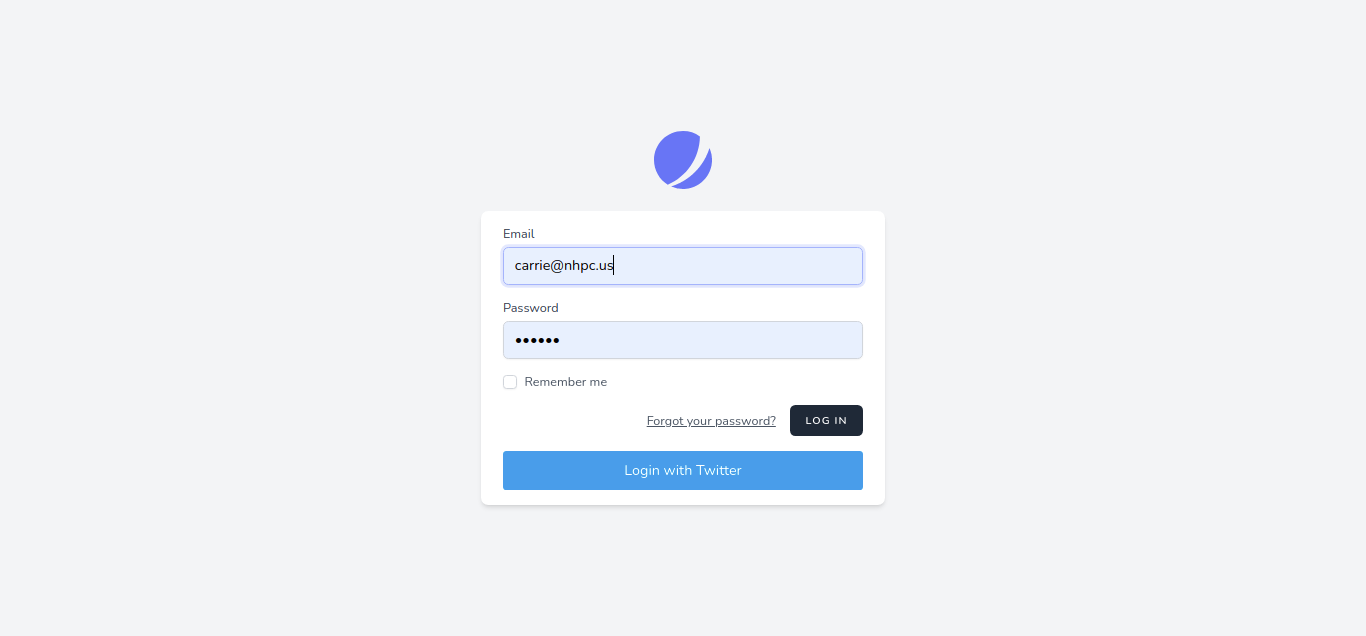
I hope it can help you...
#Laravel 10